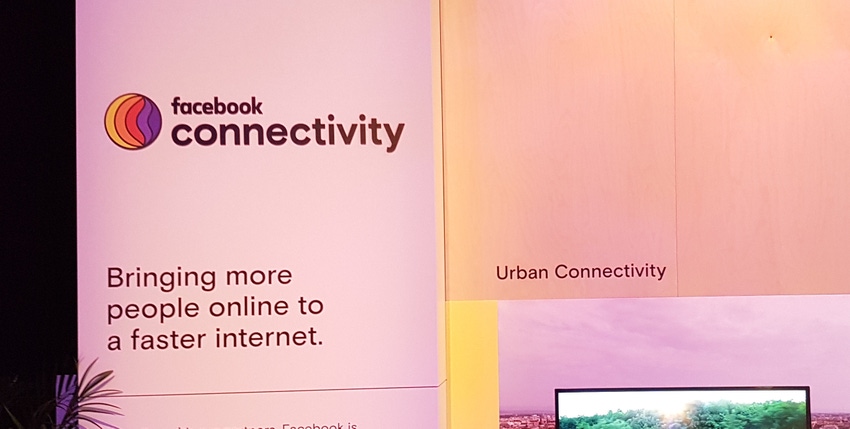At the Telecom Infra Project Summit 2018 we spoke to the Facebook execs behind the initiative to find out why they decided to get involved.
October 16, 2018

At the Telecom Infra Project Summit 2018 we spoke to the Facebook execs behind the initiative to find out why they decided to get involved.
When Facebook first started talking about getting involved in in the telecoms industry via TIP and even developing novel wireless technologies such as Terragraph, it felt like a frustrated OTT going through the motions to light a fire under the sector. Facebook’s vested interest was clear: the better and more ubiquitous the connectivity, the more people will use Facebook.
As we explained earlier, a big part of this involves efforts to make telecoms infrastructure cheaper to buy, roll-out and maintain. In that respect TIP is a direct threat to the traditional big kit vendors, not only because tower networking costs probably equate to lower profits for them, but a major aim of TIP is to expand the whole telecoms ecosystem, thus creating additional competition for them.
In a couple of small media gatherings at the event we spoke to Jay Parikh, Head of Engineering and Infrastructure at Facebook, and VP of connectivity Yael Maguire. Parikh explained that TIP is not just a product of Facebook’s own connectivity needs but also of conversations he was having with operators two or three years ago in which they implored Facebook to get involved.
The biggest mutual problem faced by Facebook and the operator community is the exponential growth in traffic over networks combined with the increasing difficulty and cost of providing it. “We were worried that innovation was slowing down,” said Parikh, in reference to the collective concern felt at the time, one which the big kit vendors were failing to sufficiently address.
In response to persistent questioning about the return Facebook expects to get on its significant (but unspecified) investment, Parikh insisted that this isn’t a short term thing for his company. The strategic objective is to catalyse the telecoms industry and ROI will be gauged by the presence of novel connectivity innovation, as opposed to direct financial considerations.
It’s easy to be sceptical any time a company claims to be doing something for the greater good, but equally this would be a strange area for Facebook to diversify into if it was only looking for a new profit centre. Having said that the world’s dominant etailer now makes much of its profit from its cloud business so you never know.
Parikh kept his cards pretty close to his chest regarding any TIP financial metrics but it’s relatively easy to believe that a cash-rich Silicon Valley company might be prepared to spend money a bit more speculatively than a traditional outfit. Facebook considered its own fortunes to be intrinsically allied to those of the global telecoms industry, so helping it innovate is viewed as sufficiently self-interested by itself, for now at least.
When asked what the top priorities are for Facebook from TIP, Parikh cited the connectivity insights programme, which aims to give operators additional data to help operators make informed decisions derived, in part, from anonymised Facebook user data. Rural access work is also important as Facebook seeks its next billion users, and Telefónica’s work in Peru was cited as an example of this.
The third priority is Terragraph, which is positioned as an alternative to fixed wireless access delivered over unlicensed 60 GHz spectrum, of which there is plenty, with an emphasis on backhauling wifi. This is a key concern of Maguire’s, who noted that average video speeds are declining across the board thanks to the aforementioned imbalance between demand and supply.
Maguire explained that Terragraph started as a project designed to look into the viability of using the 60 GHz spectrum for backhaul. At such a high frequency there are a bunch of propagation challenges, with even oxygen itself contributing to signal degradation. But it turns out that if you get the precise line of sight alignment right and don’t try to transmit any further than 200m, then it can be used in much the same way we’re talking about FWA over mm wave for 5G.
In keeping with Facebook’s general tone on this stuff Maguire played down any direct antagonism between Terragraph and mm wave FWA, insisting they just wanted to offer up alternatives. I was also keen to stress that this technology is specifically intended for high bandwidth wireless backhaul. “It’s not a solves all problems technology,” he said.
So, in summary, Facebook says it’s not looking for any immediate return from its involvement and investment in TIP. Instead it expects to benefit from the telecoms industry innovating as a faster pace than it would have if Facebook hadn’t decided to get involved. Aside from justifiable scepticism about any company being so sanguine about immediate, demonstrable ROI there’s little reason not to take Facebook at face value on this, while also keeping a watchful eye out for mission creep as things progress.
About the Author(s)
You May Also Like








.png?width=300&auto=webp&quality=80&disable=upscale)


_1.jpg?width=300&auto=webp&quality=80&disable=upscale)


.png?width=800&auto=webp&quality=80&disable=upscale)